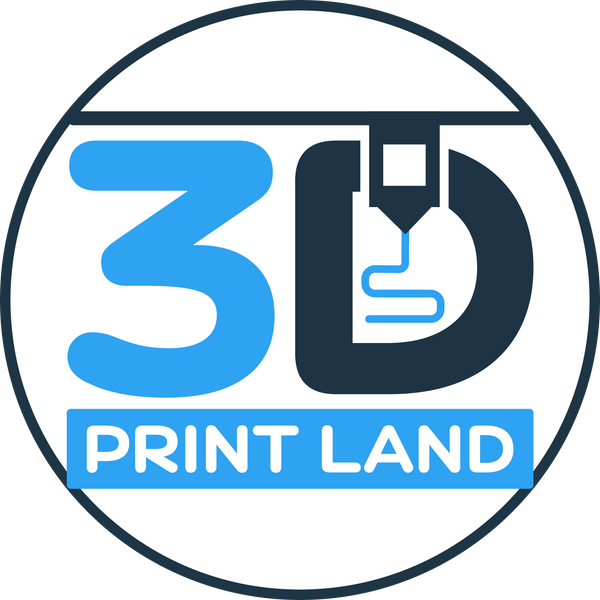
3D Printing Business Plan: Essential Elements for Success
Share
Creating a Winning 3D Printing Business Plan: Essential Elements
Embarking on a 3D printing business venture is an exciting opportunity in a rapidly growing industry. However, success depends on a well-structured business plan that outlines your vision, strategy, and financial projections. This comprehensive guide will delve into the essential elements of a 3D printing business plan, equipping you with the tools to navigate the complexities of this dynamic market.
1. Executive Summary: Setting the Stage
The executive summary is your elevator pitch, a concise overview of your business plan. It should highlight your key offerings, target market, competitive advantage, and financial goals. This section should captivate potential investors and stakeholders and provide a compelling reason to read further.
2. Company Description: Defining Your Identity
In this section, describe your 3D printing company, including its legal structure (sole proprietorship, LLC, etc.), mission statement, and core values. Outline the specific 3D printing services you offer, whether it's custom printing, product prototyping, or specialized applications. Clearly communicate what sets your company apart from competitors.
3. Market Analysis: Understanding Your Landscape
Conduct thorough market research to identify your target audience and the competitive landscape. Consider factors like:
- Target Market: Who are your ideal customers? What are their specific needs and pain points?
- Industry Trends: What are the current and future trends in 3D printing? How can you capitalize on these trends?
- Competitive Analysis: Who are your direct and indirect competitors? What are their strengths and weaknesses? How will you differentiate yourself?
- Market Size and Growth Potential: What is the estimated size of the 3D printing market in your area? What is the projected growth rate?
4. Products and Services: Your Offerings
Detail the specific 3D printing products and services you will offer. This includes:
- 3D Printing Technologies: What types of 3D printing technologies will you utilize? (e.g., Fused Deposition Modeling (FDM), Stereolithography (SLA), Selective Laser Sintering (SLS))
- Materials: What materials will you be able to print with? (e.g., plastics, metals, ceramics)
- Printing Services: Will you offer design services, post-processing, or other value-added services?
- Pricing Strategy: How will you price your products and services? Will you offer discounts or package deals?
5. Marketing and Sales Strategy: Reaching Your Customers
Develop a strategic marketing plan to reach your target audience effectively. Consider:
- Target Audience: Who are your ideal customers? What are their preferred channels of communication?
- Marketing Channels: How will you market your services? (e.g., online advertising, social media, industry events, content marketing)
- Sales Strategy: How will you generate leads and convert them into customers? (e.g., direct sales, online platforms, partnerships)
- Customer Relationship Management (CRM): How will you nurture customer relationships and build brand loyalty?
6. Management and Operations: Your Team and Processes
Outline your management team, their expertise, and roles within the company. Describe your operational processes, including:
- Production Process: How will you manage the 3D printing process, from design to delivery?
- Quality Control: What measures will you implement to ensure the quality of your prints?
- Inventory Management: How will you manage your inventory of materials and equipment?
- Customer Service: How will you provide exceptional customer service to build positive relationships?
7. Financial Projections: Planning for Growth
This section is critical for investors and lenders. Provide detailed financial projections, including:
- Start-up Costs: Estimate the costs associated with launching your business, including equipment, software, marketing, and operating expenses.
- Revenue Projections: Forecast your revenue based on your market research and sales strategy.
- Profitability Analysis: Project your net income and operating margin.
- Break-Even Analysis: Determine the point at which your revenue covers your expenses.
- Funding Requirements: State your financing needs and how you plan to secure funding (e.g., loans, equity investments, grants).
8. Competitive Advantage: Standing Out from the Crowd
Highlight what makes your 3D printing company unique and competitive. This could include:
- Specialized Expertise: Do you have a niche in a specific industry or application?
- Advanced Technology: Do you utilize state-of-the-art 3D printing technology or offer unique printing materials?
- Exceptional Customer Service: Do you provide personalized service and a strong customer focus?
- Competitive Pricing: Are your prices competitive while maintaining profitability?
- Strategic Partnerships: Do you have partnerships with complementary businesses?
9. Risk Analysis: Planning for Challenges
Identify potential risks that could impact your business and develop mitigation strategies. This could include:
- Technological Advancements: How will you adapt to rapid technological advancements in the 3D printing industry?
- Competition: How will you address the increasing competition in the 3D printing market?
- Economic Fluctuations: How will you manage the impact of economic downturns or changes in demand?
- Supply Chain Issues: How will you ensure a consistent supply of materials and equipment?
10. Conclusion: A Vision for the Future
Summarize your business plan and reiterate your long-term vision for the company. Highlight your key strengths and the potential for growth and success in the 3D printing industry. Conclude with a call to action, inviting investors, partners, or customers to be a part of your journey.
Key Takeaways:
- A comprehensive 3D printing business plan is essential for success.
- Thorough market research, competitor analysis, and financial projections are crucial.
- Focus on your competitive advantage, risk mitigation strategies, and long-term vision.
Remember, your 3D printing business plan is a living document. It should be reviewed and updated regularly to reflect market changes, company growth, and evolving business strategies. By following these guidelines, you'll be well-positioned to launch and grow a successful 3D printing business.
